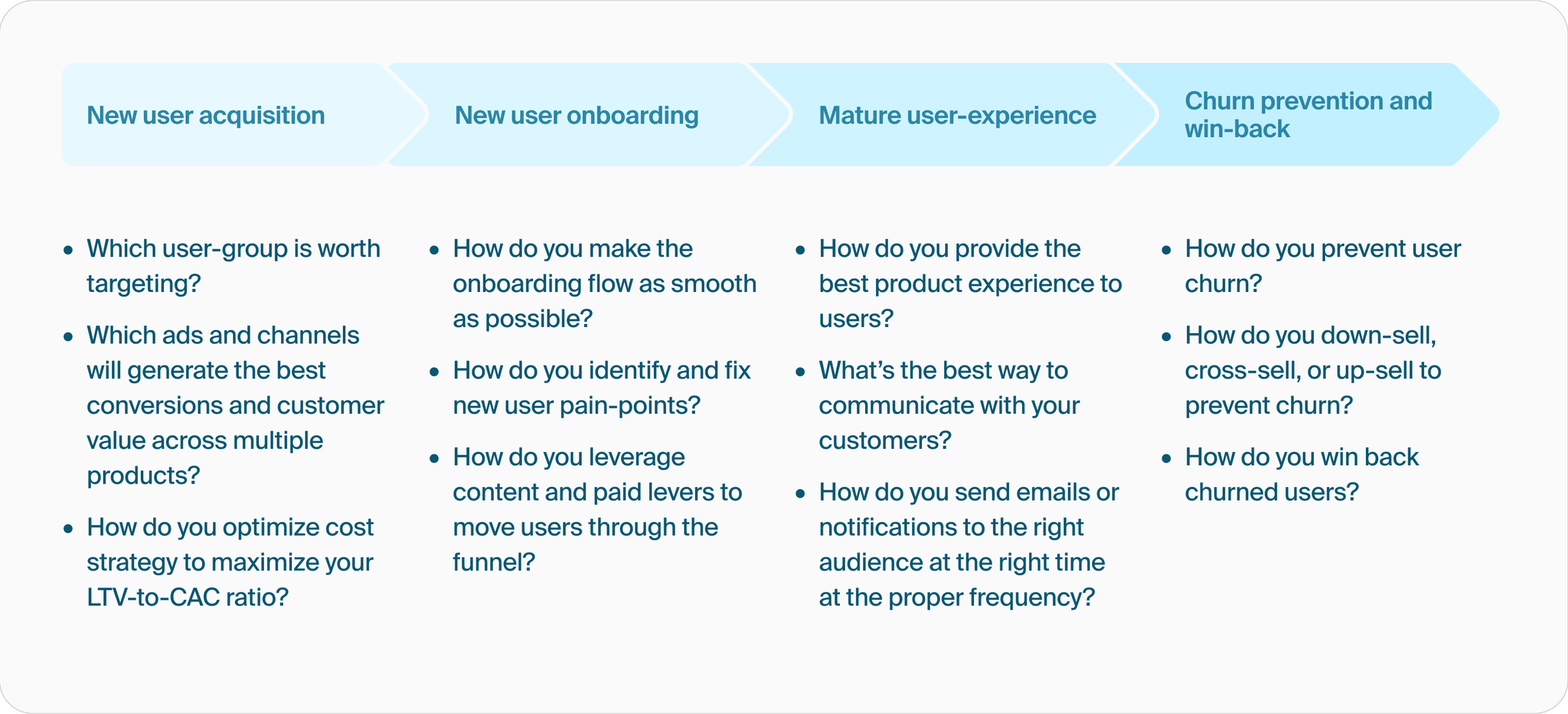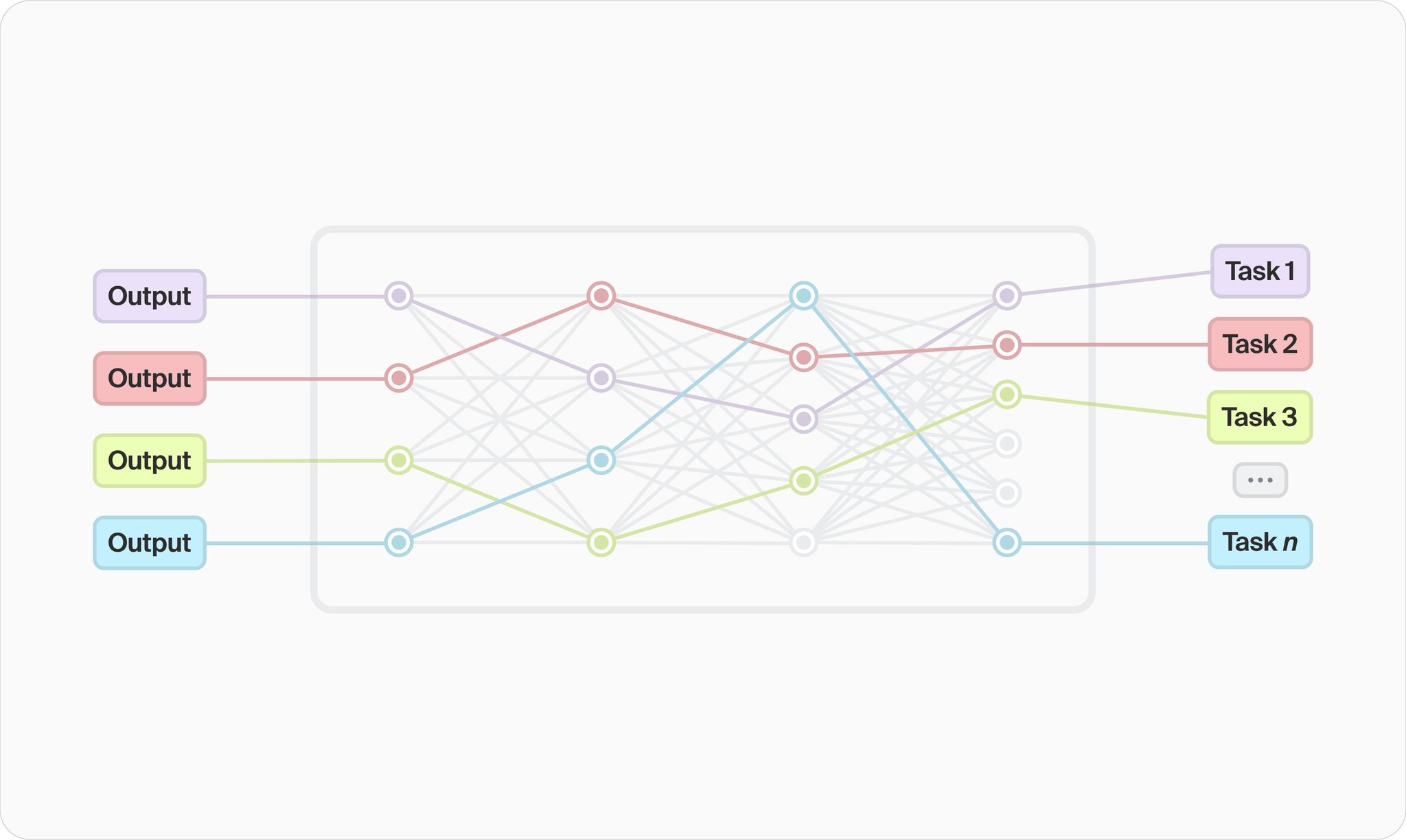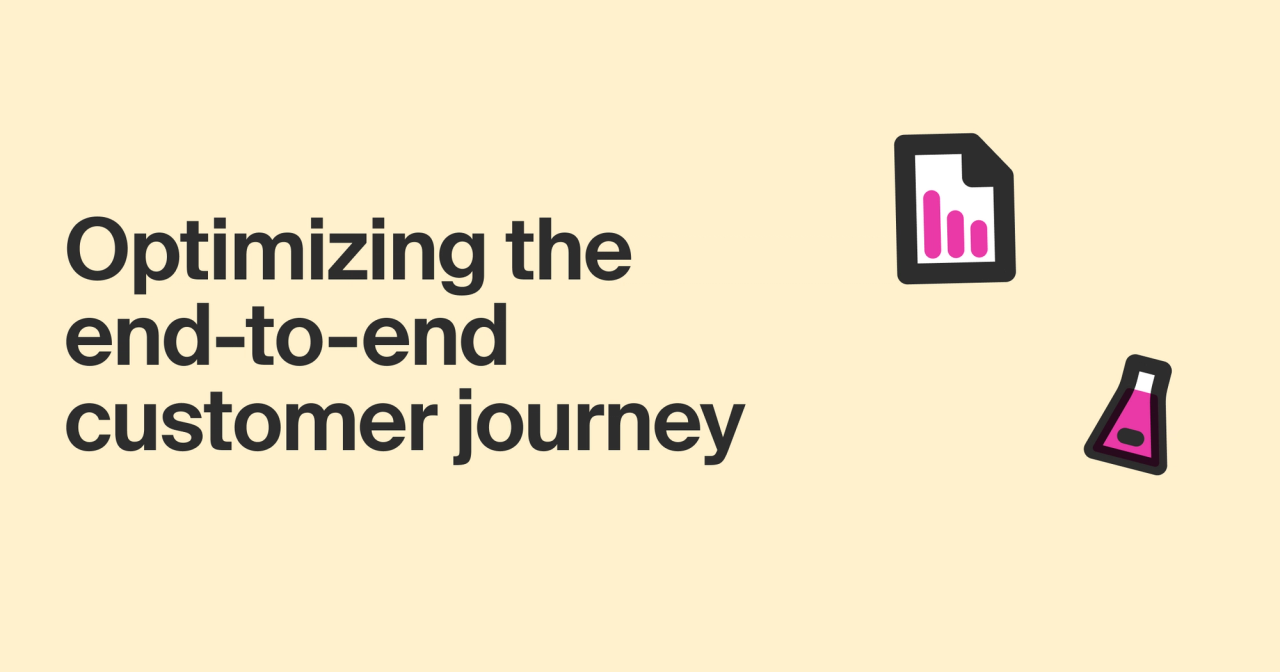Common Room is the only platform that connects community data, product usage data, and customer data to give you full visibility and control of the customer journey. By using artificial intelligence (AI) and machine learning (ML), we enable organizations to optimize their customer journey at every step and touchpoint. Our goal is to build intelligent systems that will enable organizations to understand their customers holistically and help them be more successful at every stage of their journey.
Defining the end-to-end customer journey
When we talk about the end-to-end customer journey, we’re referring to the experience that customers have with a business from the very first impression until the end. It encompasses every touchpoint that the customer has with the business or product across all channels and systems. The customer journey begins when a customer first becomes aware of the business, which can be long before the customer is considered a lead, prospect, or user. From there, the customer may interact with the business in various ways, which can include engaging in digital channels, signing up for a free trial, or making purchase decisions. The customer journey continues on beyond the point of conversion—it includes post-purchase activities like follow-up interactions, customer issues or bug reports, and nurture campaigns.
These interactions are key to understanding how your customers are using your product, what is resonating with them, and which areas you can improve. Ultimately, the end-to-end customer journey should be designed to create a seamless experience for customers. Throughout the customer journey and lifecycle, there are opportunities for optimization using AI and ML:
- 1️⃣ New user acquisition
Optimizing new user acquisition starts with your targeting strategy and making sure you’re going after the right people at the right time. When targeting new users, it’s important to make sure you’re choosing the right ad design, content, and channels to generate the best conversions and customer value. When it’s time for buying decisions, you can optimize your bidding strategy to get a higher customer lifetime value to customer acquisition cost (LTV:CAC) ratio. - 2️⃣ New user onboarding
Your onboarding flow for new users should be as smooth as possible to make sure users feel supported every step of the way. Your team should be ready to identify, address, and fix new user pain points and leverage messaging and various channels to move users through the funnel. - 3️⃣ Mature user experience
Mature users need to continue to be nurtured as they continue on their customer journey. Providing the best product experience to users includes your product design, recommendation algorithm, search algorithm, and pricing strategy. In addition, finding the best way to communicate with your customers is key to making sure they’re informed but not inundated. - 4️⃣ Churn prevention and win-back
Learning how to prevent user churn requires insights into your customer journey and identifying the right signals of customers that are likely to churn. To address this, you can optimize your strategy to determine whether a downsell, upsell, or cross-sell strategy will help prevent churn. By leveraging intelligent insights, you can win back churned users.

As discussed in this workshop, you can leverage AI and ML to answer all of the questions above and optimize solutions to create a seamless journey for your customers.
Focusing on the holistic success of customers across the entire journey
Today, most AI and ML research on customer optimization focuses on the piecemeal success of customers. This research focuses on answering questions like:
- Which users have a high propensity to buy a product or use a service?
- What’s the most appropriate content to show to a particular user at a particular time?
- Which users have the highest propensity to churn?
Consequently, most models and algorithms are built independently across the customer journey to serve a single purpose at individual touchpoints.
“Today's AI models are typically trained to do only one thing.”
— Jeff Dean, Google Senior Fellow and SVP, Google Research
This leads to inefficiencies in the modeling and data pipelines and the related infrastructure setup, which leads to suboptimal results in algorithms since the model can only access partial information. There has been less thought around building a coherent system for the long term, or end-to-end, customer optimization system.
The concept of a single model that carries out multiple tasks has been applied successfully in natural language processing with large language models (LLMs), like BERT, GPT-3, BLOOM, and Megatron-Turing, and in image processing with Dalle-2 and Stable Diffusion. However, the way most AI systems are designed—especially in the context of customer journey optimization—are still siloed and bifurcated, with a single system for a single task. By switching to a single model for multiple tasks, your model has access to all of the information needed to optimize results.

As exemplified by Google’s Pathways, this AI architecture shows a single model that can execute multiple tasks.
Understanding the levers that can help make customers more successful on your platform in a single, consolidated system is key to optimizing for the holistic success of your customer. It is critical to not only predict customer success or which customers are likely to be successful, but also to be able to take the customer on a more successful path on your platform.
Using Common Room to optimize the customer journey
Common Room brings together digital engagement across your community, product, and customer channels and adds a layer of intelligence on top so that conversations, questions, trends, content, feedback, and sentiment can be quickly surfaced, understood, and acted upon. Here are some steps our AI and ML system currently takes to enable you to optimize your end-to-end customer journey:

- Creating a single profile identity across digital channels: We have many native integrations that allow you to connect your business data, social media, success and support platforms, forums, and more. With our auto-merge model, we use ML to detect if two or more member profiles are the same person and merge them, giving our customers a digital 360° view of each of their members in a single profile.
- Extracting insights from conversations across platforms: We apply a layer of intelligence throughout our product to help our customers quickly convert volumes of digital activity data into impactful signals for their business. This includes sentiment detection on all conversations, grouping content into topics using natural language processing, automatic categorization of content, and member profile enrichment using information across digital profiles.
- Enabling actions to drive business outcomes: We enable customers to automatically create cohorts of users and message them during different stages of their journey to drive engagement and nurture them at scale.
- Syncing between Common Room and your business tools: With our bi-directional CRM integrations, we look at community activity, product usage, and organizational data to predict which organizations have the highest propensity to convert in our customers’ community. With these insights, we enable our customers to convert digital activity to bottom-line impact.
As we continue to mature our models to lead the path in end-to-end customer journey optimization, we’re working to create a single system that carries out all of the tasks above, plus more. We’re excited to advance our system to enable our customers to optimize their customers’ journeys—stay tuned for more!
🚀
The ideas discussed in this blog are inspired by the discussions in the 1st Workshop on End-End Customer Journey Optimization at KDD 2022, co-organized by Neha Gupta and industry-wide AI leaders.
Want to see our data team’s work in action? Try Common Room for free or request a demo to learn more about how you can optimize your customer journey.
